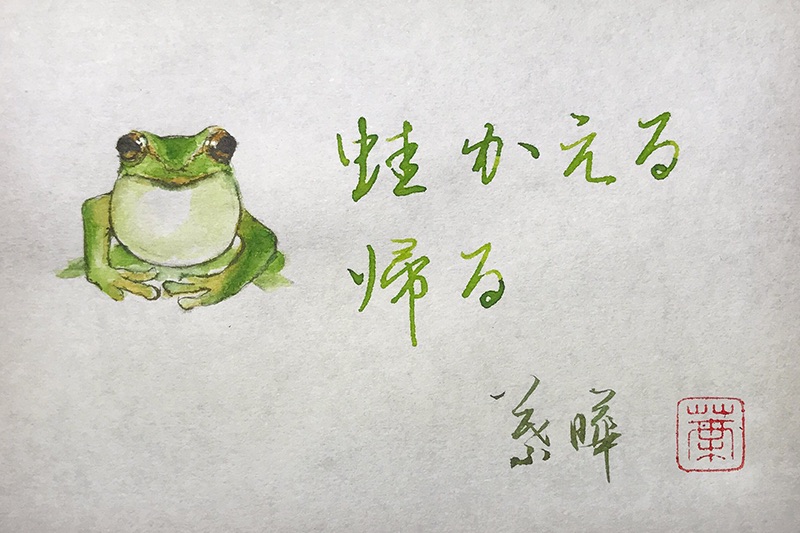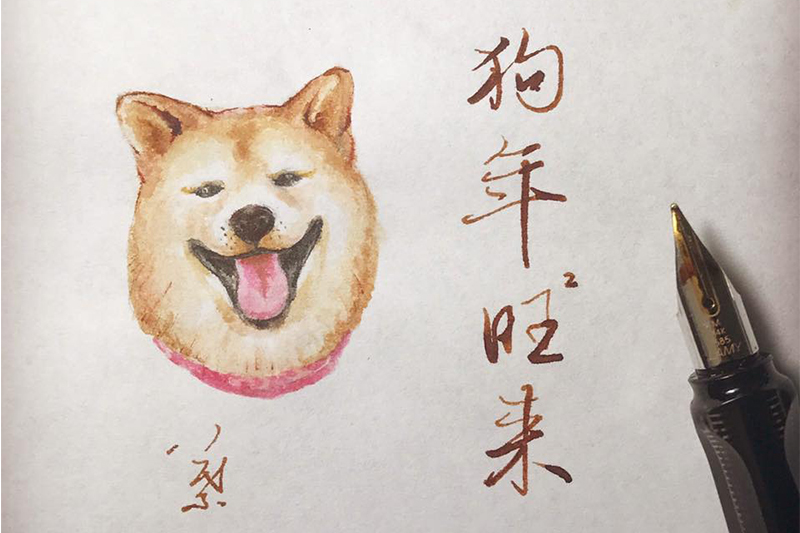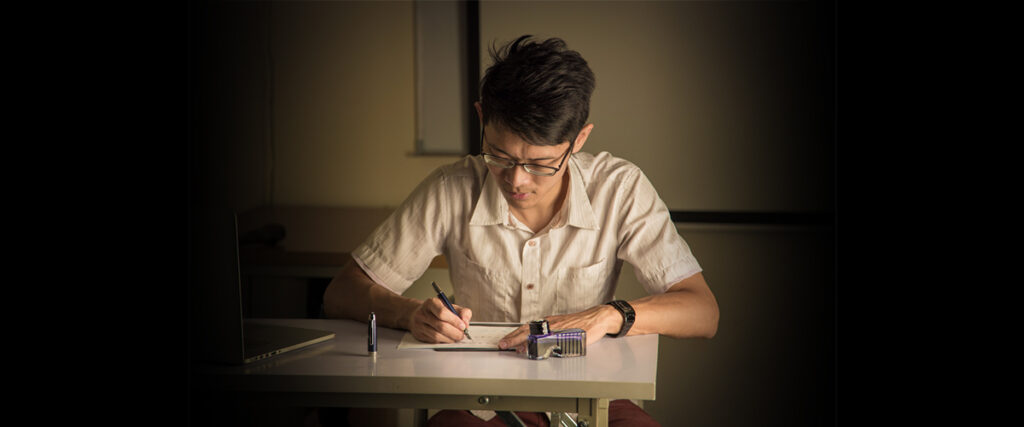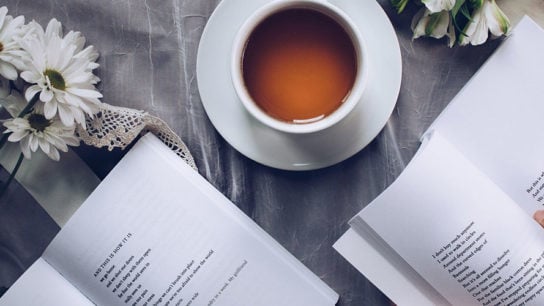Taiwanese art teacher turned renowned penmanship expert Yeh Yeh is transforming the simple act of handwriting into an art form, inspiring us all to put pen to paper, literally.
On stage at the Golden Melody Awards in 2016, an awards show regarded as the Grammys of the Chinese-speaking world, the crowd waited as the lights dimmed and images of swirling snow and rushing water were cast onto the stage. As a hauntingly mesmerising aboriginal song rung out through the arena, lines of poetry appeared on the screen in an elegant, flowing script; less rigid than the standard Kaishu style, but still reminiscent of the carefully structured works of traditional Chinese calligraphy, as if each word was written with intention and tremendous care. These characters were the works of Yeh Yeh, a hard-nib Chinese calligraphy artist from Taiwan and a man dedicated to preserving the cultural heritage of calligraphy.

“I think the story that people most often hear about me is that I was ridiculed by my classmate about my handwriting, and that is why I started practising it seriously,” begins Yeh Yeh, retelling the story that has been widely reported by media outlets across Taiwan, Hong Kong and Macau. When he was fifteen, a classmate saw his handwriting and declared that it was atrocious, prompting Yeh Yeh to work on his penmanship skills. Every day after school, he would spend hours practising, trying to perfect each dot, dash and stroke. And as time passed, what started as an exercise to improve his confidence became an appreciation and love for the practice.
This love for writing, in the literal sense, grew to encompass traditional Chinese calligraphy when Yeh Yeh was in high school, and later hard-nib calligraphy, which uses fountain pens and ballpoint pens (as opposed to writing brushes) to create the same kind of structural beauty seen in traditional calligraphy works. To him, hard-nib calligraphy served as a bridge between traditional Chinese calligraphy and modern society, a way of incorporating the art form and cultural heritage into our daily lives. “You can say that it is a form of contemporary calligraphy,” he explains.

Despite his love for the craft, and having won nationwide competitions, Yeh Yeh never saw his passion as a career. Instead, after completing a fine arts degree, he moved to Kinmen, his parents’ hometown, and became an art teacher. By thirty, however, he was beginning to have second thoughts. “I started to reflect on my own life. Was there anything in my life that if I didn’t pursue, I would later regret?”
The answer? He wanted to find a way to document his handwriting, and so after seeing an advertisement by a company that produced fonts, he embarked on a project that would later become the first handwritten computer font in the Chinese-speaking world. At the same time, he started work on a book with fellow calligrapher Yang Geng. Published in 2017 and titled 美字靜心 (Mei Zi Jing Xin, which roughly translates as, ‘beautiful words calm the heart’), the book guides beginners through the basics of hard-nib calligraphy from dissecting the structure of Chinese characters to explaining the process.

The rest is history. Within three months of the book’s release, Yeh Yeh had gained more than 100,000 followers on his newly established Facebook page, a number that has more than doubled since then, sold more than 60,000 copies of his book and was hosting writing workshops across Taiwan. Perhaps most impressive is that he is credited with sparking a widespread uptake of calligraphy; after his book was released, there was an eightfold increase in writing-related merchandise sales on one of Taiwan’s largest online shopping sites.
Yeh Yeh’s popularity spread to neighbouring Hong Kong, where he was a featured speaker at the Hong Kong Book Fair. One follower that has moved him the most is actually from Hong Kong: a student that came to his first-ever sharing session in the city. Once a teenager who struggled with expressing his emotions, this secondary student started using calligraphy as a way to process his feelings. Through his practice, he was able to communicate better with his friends and family and return to school. “When I see how much he has grown and improved, it reminds me of how I went from being hesitant to becoming more confident myself,” says Yeh Yeh, smiling.
It is these experiences that make Yeh Yeh all the more certain that practising ‘writing’ is meaningful, and not a waste of time in our tech-filled world. “In a fast-paced city, practising penmanship is a great way to slow down and find peace within,” he says. He is now delving into the study of philology to provide more historical background to his lessons and also exploring ways to apply his training in fine arts to his calligraphy work by combining Chinese characters and paintings. His goals are to share the art of handwriting with even more people and to continue the legacy of calligraphy so it lives on in our daily lives. The place he’s arrived at already, however, is testament enough to his passion and talent. As he puts it, “I think, simply put, success is finding your value in life, and making the most out of it. As long as I can do that, I think that’s pretty good.”
Related Articles
5 Effective Ways to Improve Your Business Writing




